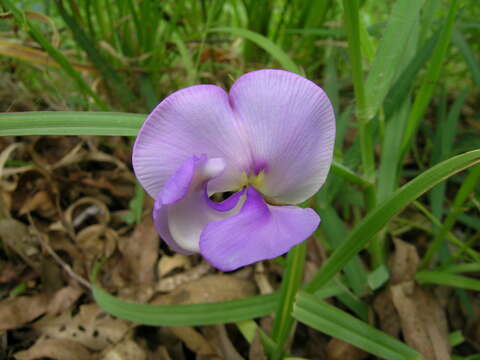Vigna vexillata var angustifolia flower5 (11456453913)

Description:
Description: Native, warm-season, perennial, scrambling, climbing legume. Leaves have 3 leaflets, each linear and up to 15 cm long. The central leaflet has a longer stalk than the lateral ones. Flowerheads are racemes of 2-4 large (20-30 mm long), pale to deep purple, pea-like flowers. Pods are hairy, cylindrical up to 14 cm long. Flowering is in spring and summer. Found on hill slopes and in gullies. Although reputed to grow in moist sites, it is often common during wet summers on what are normally hot dry hill slopes. Tolerant of long periods of flooding. Native biodiversity. Certain accessions have been used for their storage roots (high protein) and seeds (as a pulse), as well as for forage and erosion control in Africa and Asia. It is a close wild relative to cowpea (V. sinensis) and produces a very palatable, high protein feed. In the past it has been sown as a pasture legume in tropical Australia. Most common in lightly grazed pastures. Date: 22 January 2008, 12:49. Source: Vigna vexillata var angustifolia flower5. Author: Harry Rose from South West Rocks, Australia.
Included On The Following Pages:
- Life (creatures)
- Cellular (cellular organisms)
- Eukaryota (eukaryotes)
- Archaeplastida (plants)
- Chloroplastida (green plants)
- Streptophyta
- Embryophytes
- Tracheophyta (ferns)
- Spermatophytes (seed plants)
- Angiosperms (Dicotyledons)
- Eudicots
- Superrosids
- Rosids
- Fabales ("An order: peas, beans, and relatives")
- Fabaceae (legumes)
- Vigna (cowpea)
- Vigna vexillata (zombi pea)
This image is not featured in any collections.
Source Information
- license
- cc-by-3.0
- copyright
- Harry Rose
- creator
- Harry Rose
- source
- Flickr user ID macleaygrassman
- original
- original media file
- visit source
- partner site
- Wikimedia Commons
- ID


